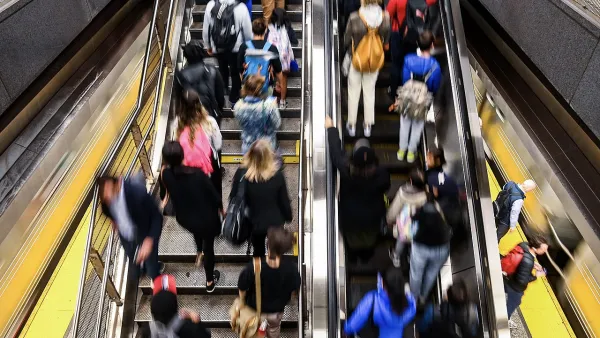Brampton, Ontario used gradual improvements in service to prove that if you build it, they will ride.

When you think of high public transit ridership, suburbs don’t often come to mind. But Brampton, Ontario — a suburb of Toronto — turns this on its head. The town, with a population of 700,000, sees roughly 226,500 bus riders on an average weekday.
As Jonathan English explains in Bloomberg CityLab, Brampton proves that “even in a place without any of the supposed prerequisites, you can still get tens of thousands of people to choose to ride the bus.”
The industrial city is laid out like many North American suburbs, with sprawling warehouses, wide multilane roads, and little pedestrian infrastructure to make walking appealing. So what makes transit more appealing here? “Quite simply, Brampton provides service that is good enough to make getting around by transit reasonable for people who have other transportation options — a group that transit agencies often dub ‘choice riders’ — as well as for people with no other choice.”
Brampton’s bus routes run as often as every five minutes and offer some night service, making the system much more practical for residents. “High frequency also makes transfers feasible, meaning that people can make anywhere-to-anywhere journeys rather than being constrained to going to wherever their local bus happens to go.”
The system improved service gradually, leading to a steady growth in ridership that helped offset the costs of additional service. According to English, Brampton Transit demonstrates a version of ‘induced demand’ for transit: “If you provide a more attractive service, more people will use it.”
FULL STORY: How Did This Suburb Figure Out Mass Transit?

Planetizen Federal Action Tracker
A weekly monitor of how Trump’s orders and actions are impacting planners and planning in America.

Chicago’s Ghost Rails
Just beneath the surface of the modern city lie the remnants of its expansive early 20th-century streetcar system.

Amtrak Cutting Jobs, Funding to High-Speed Rail
The agency plans to cut 10 percent of its workforce and has confirmed it will not fund new high-speed rail projects.

Ohio Forces Data Centers to Prepay for Power
Utilities are calling on states to hold data center operators responsible for new energy demands to prevent leaving consumers on the hook for their bills.

MARTA CEO Steps Down Amid Citizenship Concerns
MARTA’s board announced Thursday that its chief, who is from Canada, is resigning due to questions about his immigration status.

Silicon Valley ‘Bike Superhighway’ Awarded $14M State Grant
A Caltrans grant brings the 10-mile Central Bikeway project connecting Santa Clara and East San Jose closer to fruition.
Urban Design for Planners 1: Software Tools
This six-course series explores essential urban design concepts using open source software and equips planners with the tools they need to participate fully in the urban design process.
Planning for Universal Design
Learn the tools for implementing Universal Design in planning regulations.
Caltrans
City of Fort Worth
Mpact (founded as Rail~Volution)
City of Camden Redevelopment Agency
City of Astoria
City of Portland
City of Laramie





























